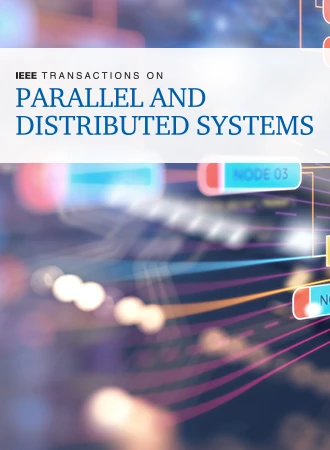Taming Offload Overheads in a Massively Parallel Open-Source RISC-V MPSoC: Analysis and Optimization
IF 5.6
2区 计算机科学
Q1 COMPUTER SCIENCE, THEORY & METHODS
IEEE Transactions on Parallel and Distributed Systems
Pub Date : 2025-03-28
DOI:10.1109/TPDS.2025.3555718
引用次数: 0
Abstract
Heterogeneous multi-core architectures combine on a single chip a few large, general-purpose在大规模并行开源RISC-V MPSoC中驯服卸载开销:分析和优化
异构多核架构在单个芯片上结合了几个针对单线程性能进行了优化的大型通用主机内核,以及(许多)用于数据并行处理的小型、专用、节能加速器内核集群。将计算卸载到多核加速结构意味着同步和通信开销,这可能会影响整体性能和效率,特别是对于小而细粒度的并行任务。在这项工作中,我们对Occamy上的卸载开销进行了详细的、周期精确的定量分析,Occamy是一种开源的大规模并行RISC-V异构MPSoC。我们研究了开销如何随着加速器核心数量的增加而增加。我们探索了一种通过共同设计硬件和卸载例程来大幅减少这些开销的方法。值得注意的是,我们证明,通过将多播功能集成到大型(200+核)加速器结构的片上网络中,我们可以将卸载的应用程序运行时间提高2.3倍,将可达到的理想速度恢复70%以上。最后,我们提出了一个定量模型来估计考虑卸载开销的选定应用程序的运行时,误差始终低于15%。
本文章由计算机程序翻译,如有差异,请以英文原文为准。
求助全文
约1分钟内获得全文
求助全文
来源期刊

IEEE Transactions on Parallel and Distributed Systems
工程技术-工程:电子与电气
CiteScore
11.00
自引率
9.40%
发文量
281
审稿时长
5.6 months
期刊介绍:
IEEE Transactions on Parallel and Distributed Systems (TPDS) is published monthly. It publishes a range of papers, comments on previously published papers, and survey articles that deal with the parallel and distributed systems research areas of current importance to our readers. Particular areas of interest include, but are not limited to:
a) Parallel and distributed algorithms, focusing on topics such as: models of computation; numerical, combinatorial, and data-intensive parallel algorithms, scalability of algorithms and data structures for parallel and distributed systems, communication and synchronization protocols, network algorithms, scheduling, and load balancing.
b) Applications of parallel and distributed computing, including computational and data-enabled science and engineering, big data applications, parallel crowd sourcing, large-scale social network analysis, management of big data, cloud and grid computing, scientific and biomedical applications, mobile computing, and cyber-physical systems.
c) Parallel and distributed architectures, including architectures for instruction-level and thread-level parallelism; design, analysis, implementation, fault resilience and performance measurements of multiple-processor systems; multicore processors, heterogeneous many-core systems; petascale and exascale systems designs; novel big data architectures; special purpose architectures, including graphics processors, signal processors, network processors, media accelerators, and other special purpose processors and accelerators; impact of technology on architecture; network and interconnect architectures; parallel I/O and storage systems; architecture of the memory hierarchy; power-efficient and green computing architectures; dependable architectures; and performance modeling and evaluation.
d) Parallel and distributed software, including parallel and multicore programming languages and compilers, runtime systems, operating systems, Internet computing and web services, resource management including green computing, middleware for grids, clouds, and data centers, libraries, performance modeling and evaluation, parallel programming paradigms, and programming environments and tools.
 求助内容:
求助内容: 应助结果提醒方式:
应助结果提醒方式:


